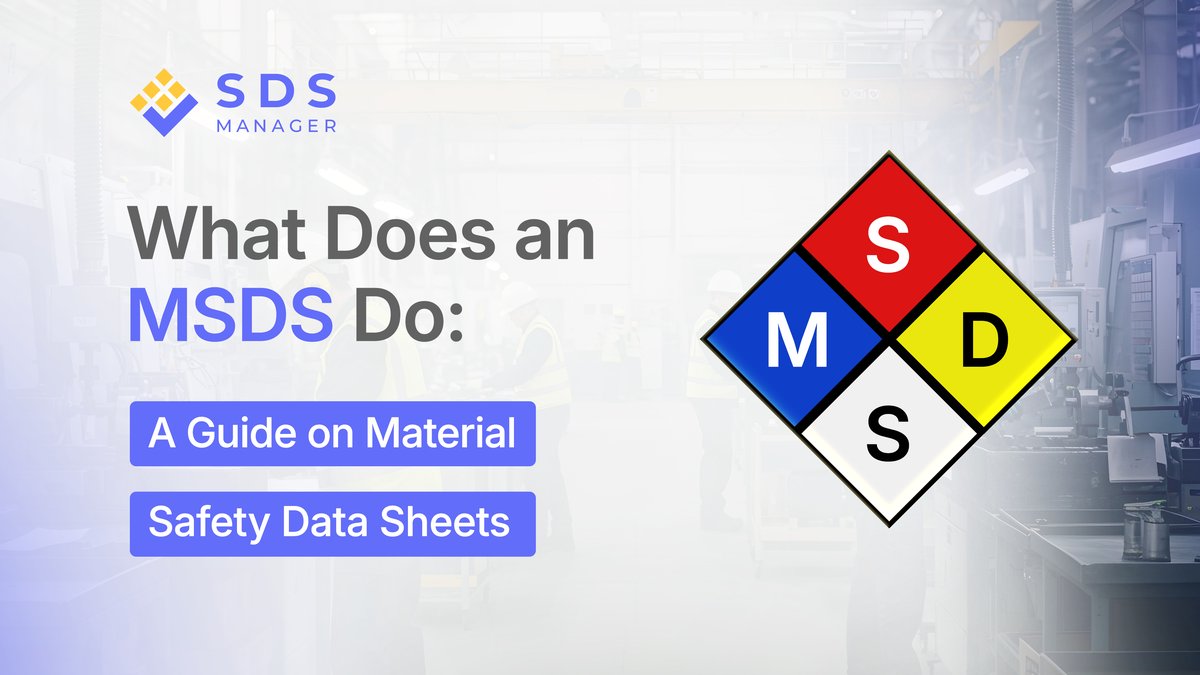

Material Safety Data Sheets (MSDS) are documents created to share important chemical safety information with both employers and employees. They act as a key resource, helping anyone who works with chemicals understand the risks and the steps needed to stay safe.
Structure of an MSDS
A Material Safety Data Sheets (MSDS) helps protect workers, contractors, and emergency responders (like paramedics and firefighters) by clearly explaining what a chemical is, what it can do, how to handle it safely, how to store and dispose of it, and what actions to take in case of an accident or exposure. All of this guidance is organized into different sections for easy reference.
The structure of an MSDS is not globally standardized, but it generally consists of 8 to 16 sections, depending on the issuing country or manufacturer. Here's a breakdown of the typical 8-section MSDS format, which has been common in New Zealand:
| Section | Description |
|---|---|
| Identification | Provides the product’s name, chemical synonyms, CAS number, and manufacturer’s information including contact details. Ensures correct identification and access to further information. |
| Hazard Identification | Summarizes the main hazards of the chemical, such as health risks, environmental dangers, and key warning symbols or phrases. |
| Composition | Lists the chemical ingredients and their concentrations, helping users understand what the product contains. |
| First-aid measures | Offers clear instructions on what to do if someone is exposed to the chemical (by inhalation, skin or eye contact, or ingestion.) |
| Fire-fighting measures | Details the best ways to put out a fire involving the chemical, including suitable extinguishing media and any special advice for fire crews. |
| Accidental release measures | Explains how to safely clean up spills or leaks, including personal precautions, protective equipment, and environmental steps. |
| Handling and storage | Advises on safe ways to handle and store the chemical to prevent accidents, including any incompatible materials or conditions to avoid. |
| Exposure controls/personal protection | Describes recommended protective gear (like gloves or masks) and workplace controls to reduce exposure and keep users safe. |
Some MSDSs may also include ecological, disposal, and transportation information, although these are more commonly found in safety data sheets (SDS).
What Does MSDS Do in Practice?
A Material Safety Data Sheet (MSDS) serves many important roles in workplace safety and compliance. Here’s how organizations benefit from using them:
- Functions as a Training Resource: MSDSs are central to safety training. They help explain the hazards and safe handling procedures for specific chemicals, making it easier for workers to understand risks and know where to find vital information.
- Facilitates Emergency Support: When accidents like spills or exposures occur, the MSDS offers quick access to instructions for first aid, firefighting, and cleanup. This helps prevent harm and keeps situations from getting worse.
- Ensures Compliance: Keeping a full set of MSDSs is often a legal requirement, especially in regulated industries. Inspectors may review these documents during audits to check if safety standards are being met.
- Acts as a Risk Assessment Tool: Safety professionals rely on MSDSs to evaluate chemical risks, decide on the right protective equipment, and set up safe work practices. The information in an MSDS is key to identifying hazards and managing them effectively
MSDS vs. SDS: Why the Difference Matters
While SDS have become the standard in many countries, including under the mandate of the Environment Protection Authority (EPA) in New Zealand, MSDS are still used by some smaller organizations, older systems, and in places where the Globally Harmonized System (GHS) has not yet been adopted. MSDS formats are often inconsistent, which can make them harder to read, compare, and access. SDS always follows a standard 16-section format under GHS, while MSDS formats can differ depending on the supplier, country, or industry practice.
Ensuring a safe workplace environment
Whichever is used, an MSDS or an SDS, the main goal remains unchanged: to provide essential chemical hazard information to those who need it most, ensuring workplace safety and compliance.